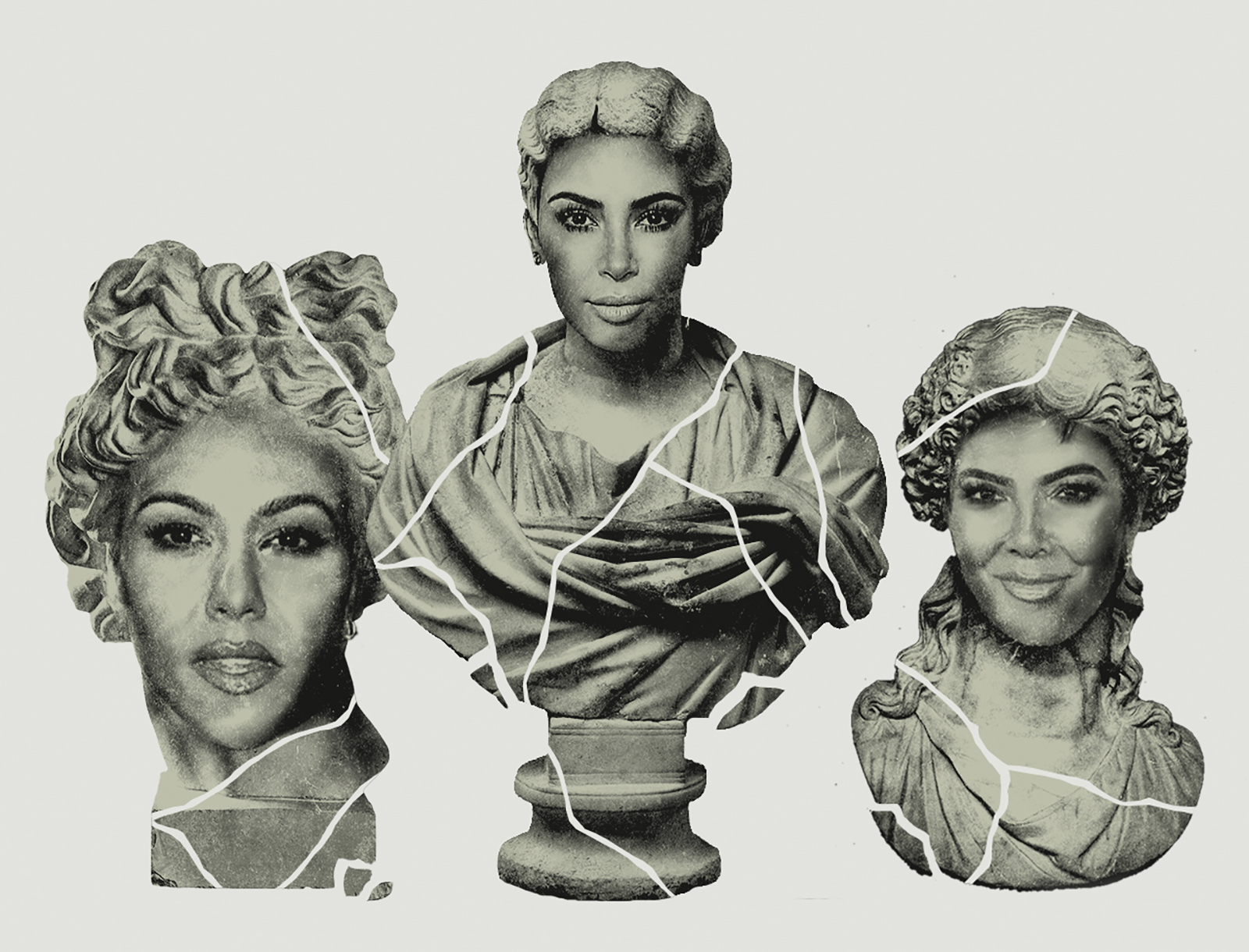“You’re a very distraught and evil human being,” Kourtney Kardashian wailed through speakerphone at her sister Kim, her sobs filling Khloé’s huge marble kitchen as a camera crew looked on. “I don’t agree with who you are as a human being.”
“OK, well, if I said something that hurt your feelings, I’m sorry,” Kim responded with a barely suppressed eyeroll. “But clearly there’s something else going on because you’re acting like a fucking lunatic.”
It was September 2017, and the pair had just erupted at each other over the scheduling of the family’s annual Christmas card shoot — a blowup that did nothing to ease months of tension over Kourtney’s perceived lack of work ethic. She’d wanted the shoot wrapped by 4 p.m., and Kim was confused as to how the family member who “worked the least” could be “the most fucking entitled.” The fight ended with Kim telling Kourtney she was welcome to skip the shoot entirely since she was the “least exciting to look at” anyway.
Kourtney, sobbing and yelling through ragged breath from her car parked outside the house she’d just stormed out of, continued her tirade as Kim, Khloé, and momager Kris Jenner listened in, thick lashes batting, plump mouths forming ovals in surprise.
“If I had enough money, I wouldn’t do the show!” Kourtney cried. “I would be a full-time mom. Honestly, we have a disgusting family. I’m ashamed to be a part of people like that. It’s just gross.”
Kim scraped her chair back from the enormous dining table, turned, and left the room shouting, “No one cares!” over her shoulder.
“I’m not going to live my life around people who make me feel bad on a daily basis,” Kourtney responded. “And I’m not going to be filming with some fucking cunt like Kim.”
And in that moment, Keeping Up With the Kardashians — one of the most culturally defining shows of the last two decades, and the centerpiece of the family’s billion-dollar empire — began to publicly implode.
Thirteen years ago, KUWTK began as an opportunity to introduce the family to the public and maximize their 15 minutes of fame, but it quickly became the foundation on which all their future successes were built. There’s a reason Kris Jenner has always defined KUWTK as the Kardashian empire’s “mothership” — the show provides the framework, the context, for everything else the family does. It extends the Kardashian news cycle, offers continued visibility, and connects them as the world’s most ubiquitous, powerful celebrity brand.
I first started working on this story in July, convinced that KUWTK was nearing its end. Then, on Tuesday, Kim proved me right. In a surprise Instagram post, she announced that the show would air its final season in early 2021. “Without Keeping Up With the Kardashians, I wouldn’t be where I am today,” she acknowledged. “The show made us who we are.”

So what were the signs that the curtain was about to fall on such a defining production? The show has been in quiet decline since 2013, but over recent years, the situation both on and off camera has become increasingly visible. The family failed to keep the show fresh and prioritize its role in breaking and airing their narrative amid the explosion of digital and social media. And as KUWTK became outpaced by a chaotic news cycle, the bonds among the family also fractured. With core cast members becoming increasingly disillusioned, and even quitting, the dynamics between the sisters soon shifted beyond repair. Storylines were reduced to destructive arguments, leaving the show that had fueled their fame for over a decade in tatters.
KUWTK did more than merely amplify their stardom — it shaped and defined it.
One of the most enduring criticisms of the Kardashian/Jenners over the years has been that they’re too visible, too pervasive. But this exposure is their power — their visibility calcifies their prominence in the public consciousness and sustains their fame.
However, KUWTK did more than merely amplify their stardom — it shaped and defined it. The show allowed the family to establish themselves not just as celebrities but as characters with storylines that the media and fans hungrily devoured. They were able to then leverage this attention into billion-dollar businesses, the success of which was driven by the public’s sense of connection to them, of knowing them. The show was their secret weapon — a tool for promotion and personification, providing personal narratives and depth that influencers and even Hollywood A-listers could never achieve.
Without KUWTK, the family enters uncharted waters. They risk losing the ubiquity and connection to one another and their public that’s underpinned their success for so long.
KUWTK was always a calculated business opportunity, the culmination of Kris Jenner’s lifelong desire for fame and prominence. And this route to stardom began with the first instance of her seizing and capitalizing on opportunity — a pattern that’s come to define their 13-year reign over pop culture.

At 5:51 p.m. on June 17, 1994, a white Ford Bronco headed down the Santa Ana Freeway. In the backseat, OJ Simpson sat clutching framed family photographs, a gun pointed to his head. Above, seven helicopters swarmed, their live footage beaming across the country as viewers waited to see what would become of the former NFL star who had just been accused of killing his ex-wife, Nicole Brown, and her friend. Midway through the chase, footage from a press conference held earlier that day was broadcast. Some 95 million people watched as Simpson’s best friend, Robert Kardashian, read aloud what was widely considered to be a suicide note to the nation’s assembled media. As a fleet of squad cars continued to trail the Bronco for the next two hours, a national obsession with the double homicide case was born.
As the trial progressed, the first iteration of reality TV began to emerge, its pulling back the curtain on the lives of celebrities more appealing — more compelling — than any scripted fiction that had ever come before. Viewers became so consumed by the goings-on in the courtroom that they swiftly abandoned their favorite soap operas and dramas in favor of the criminal proceedings. The Simpson trial not only proved the viability of reality TV as a profitable entity, but its key cast of characters appearing on late-night TV shows and receiving multimillion-dollar book deals also established the very real possibility of civilians accessing fame and fortune by mere proximity to scandal. And sitting in the public gallery of the courtroom each day watching all of this unfold was Kris Jenner.
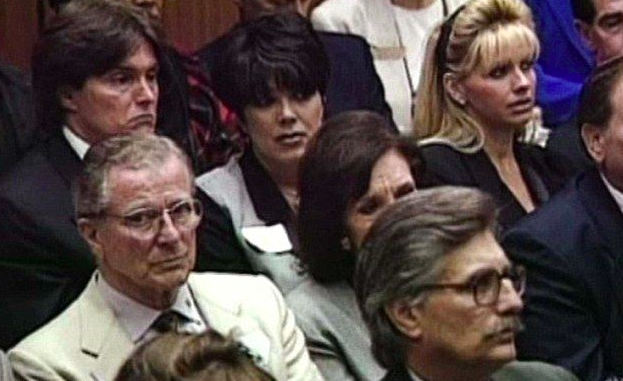
Kris was not only proximate to the people involved in the trial — the victim was her best friend, while her ex-husband, Robert, worked for the defense — but also the media circus that ensued. In the hours after the killings were announced, a photo of Nicole taken by Kris was released to the press. Days later, she’d watch, dumbfounded, as Robert read aloud Simpson’s suicide note. She navigated a throng of reporters entering the courthouse to witness proceedings most days, and even agreed to primetime interviews about her friend. In other words, Kris had a front-row seat to the most-watched event in television history.
“The family dynamic is what would make this a special show.”
It’s unsurprising, then, that she returned to the medium when the Kardashian name was propelled back into public consciousness after the leak of Kim’s sex tape in 2007. Kris had been cognizant of the need to increase her earnings ever since Robert’s death three years earlier, leaving her the sole provider for her eldest four children. After biding her time for a decade, Kris seized on the storm of publicity swirling around her daughter to break into the TV world she longed to be a part of. She began brainstorming a reality show centered on the various dramas of her large family before marching into Ryan Seacrest’s office to make the pitch.
According to her 2011 memoir, Kris Jenner...and All Things Kardashian, Kris said she told Seacrest, “The family dynamic is what would make this a special show.” Drawing attention to the media coverage Kim was attracting, she added, “We have to act fast and take advantage of the moment. Timing is everything in entertainment and pop culture.”
Then, Kris decided to push her luck. “I’d like to be an executive producer,” she said. “I need to have my hands in this. I need to have some control.”
Later that day, she broke the news of the show to her family, telling her children that the only way to secure ratings was to share every single detail of their lives, no matter how personal or revealing. Together, they would create a compulsive viewing experience sensationalizing the personal and founded on scandal — a reality show emerging from the seeds sown at the trial that originated the genre witnessed by Kris a decade earlier.

Scandal was present from the moment the cameras began rolling in mid-2007. Within minutes of the debut episode, Kim had addressed her sex tape, joking that she’d participated because she was “horny and felt like it.” Later, Kris and Kourtney got drunk on tequila and showed up late to their own party, where Khloé threatened to “strangle and beat” Kim with a bat, as 9-year-old Kylie writhed around a pole erected in her parents’ bedroom.
This set the tone for the early seasons of the show, where the core cast of nine characters navigated as much bickering and bawdy theatrics as the 30-minute time frame would allow. But despite the drama, family remained at the core of the show. Each episode drilled down into the love the Kardashians had for one another — a premise in direct opposition to other reality shows in which women were traditionally pitted against each other. Far from the catfights of shows like Laguna Beach or The Hills, the Kardashians’ conflict was always lighthearted and easily resolved. And, in a show otherwise devoted to an already objectively wealthy family’s ascent to further fame, this dynamic was the most relatable element. As Kris so accurately predicted in her pitch for the show, it’s what kept viewers tuning in.
However, it was Kourtney’s first pregnancy in 2009 that catapulted the family into a new league of celebrity. Up until then, their drama consisted of spats and relationship issues largely contained within KUWTK. Now they had a storyline — a spectacle — of consequence and interest to the masses, the personal drama suddenly transcending the world of the show. The fact that Kourtney was single at the time, her pregnancy the result of a one-night stand and the father remaining a mystery to the public, provided all the trappings of tabloid gold and enabled Kris to leverage the unprecedented interest in her family into both huge ratings and lucrative external opportunities through carefully controlled media manipulation.
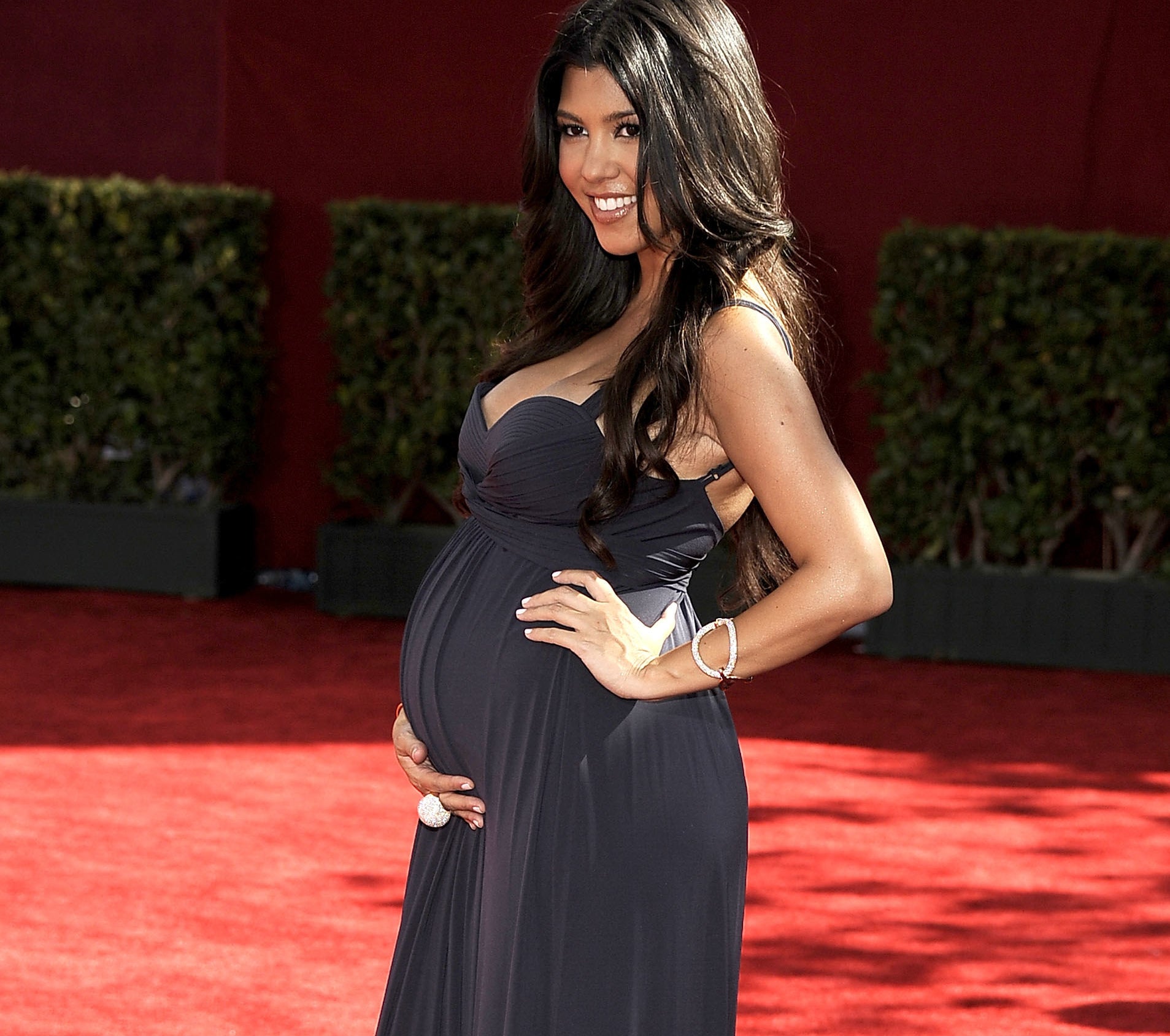
A statement was released to E! confirming the pregnancy four days before a brand-new KUWTK spinoff was due to air, teasing viewers that they would “have to watch the show” in order to find out whom the father of Kourtney’s baby was. Unsurprisingly, the season premiere of Kourtney & Khloé Take Miami drew huge ratings, with the finale — in which Kourtney discovered she was pregnant with ex-boyfriend Scott Disick’s baby — attracting almost 3 million viewers.
It was clear that carefully coordinating the release of information about their private lives to the media and saving the most crucial details and drama for the show delivered a massive audience.
The grand reveal on the show was followed by a series of exclusive magazine deals brokered by Kris and worth $300,000, all of which led seamlessly into Season 4 of KUWTK. In the end, 4.8 million viewers tuned in to watch Kourtney reach down and pull Mason Disick from her birth canal and into the world. At the time, the episode was the most-watched broadcast in E!’s history.
It was a pivotal moment for the family, establishing them as bona fide celebrities with the ability to commodify real-life events. It was clear that carefully coordinating the release of information about their private lives to the media and saving the most crucial details and drama for the show delivered a massive audience — and with it, the ability to control the news cycle, remain dominant in the celebrity food chain, and expand their empire.

This strategy played out again with Kim’s 2011 wedding to Kris Humphries, where news of their engagement was also announced close to the wedding airing. Behind the scenes, $3 million worth of magazine and broadcast deals were made, before Season 6 ended with an extended double episode dedicated to the nuptials, attracting a combined audience of 10.5 million viewers. The first episode marked the most-watched day in E!’s programming history; the second drew in six times the primetime average on the network.
Kim’s divorce announcement just 10 weeks later also became the first of many instances where the show was masterfully used to navigate and overcome PR disasters. The split announcement did, after all, generate swift and severe public backlash. However, KUWTK spinoff Kourtney and Kim Take New York was slated to air just one month after the divorce news — and premiered to a huge audience of 3.19 million.
The 10 episodes charted Kim and Humphries’ incompatibility and her increasing distress over marrying the wrong person in a global spectacle. By the season finale, Kim was left weeping over her regret at marrying Humphries so quickly, her devastation that her feelings had changed, and embarrassment at “wasting everyone’s time and money” on a doomed wedding.
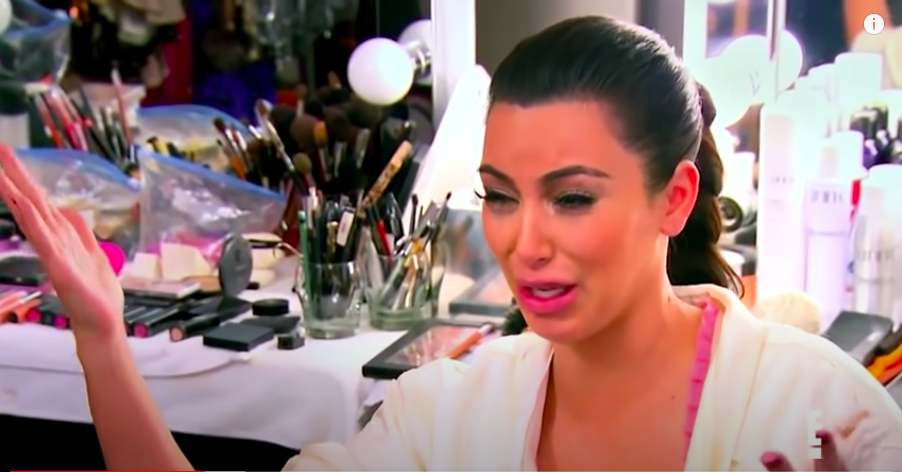
The episode not only attracted 4.47 million viewers but also redeemed Kim. Her seemingly genuine remorse transformed the narrative, positioning her as the victim of a love story gone wrong as opposed to calculated manipulator staging a wedding in exchange for magazine covers. The season proved the value of KUWTK as a public relations tool, enabling the family to mitigate negative publicity with swiftly curated responses allowing for more nuance than a Notes app apology, redeeming them while protecting and sustaining their brand.
Interest in the Kardashians reached an apex as a result. They landed major TV hosting roles, expanded clothing lines, wrote books, and, after establishing KUWTK as essential viewing, renewed the show in a $40 million deal. Fresh episodes of KUWTK would air back-to-back throughout 2012, and by the end of the year the family had raked in $65 million. Far from destroying her career, Kim’s divorce had increased her relevancy and facilitated an even further ascent to the upper echelons of celebrity, allowing her to meet and fall in love with global megastar Kanye West. Her prompt transition into motherhood provided even more storylines and opportunities for exposure.
The Kardashians had successfully pervaded our culture, but the linchpin in this success was the show. It had successfully formed the nucleus of the family empire, their cultural force emanating from the production room where Kris Jenner sat approving every scene. “I had always had the energy to pursue all these dreams,” she wrote in her memoir. “But it took a show like KUWTK to be the vehicle that could channel all my energies and turn them into viable opportunities.”
The first splinter in this success came with Kris and Caitlyn Jenner’s split in 2013. Their relationship had been at the heart of KUWTK from the very first episode, and removing it threw the show into flux. Viewers had grown accustomed to watching Caitlyn play the part of the long-suffering, henpecked spouse, eternally confused by her family’s antics — and her reduced appearances on the show as a result of the split caused a fundamental shift in KUWTK’s overall tone.
The split was quickly followed by tabloid rumors focusing on Caitlyn’s possible gender dysphoria — the first storyline where the show failed to keep up with reality.
Two months after splitting from Kris, Caitlyn was photographed leaving the back entrance of a surgical center in Beverly Hills, neck bandaged following a tracheal shave. It sparked endless paparazzi intrusion alongside speculation over the meaning of her “changing appearance.” Behind the scenes, Caitlyn was in fact making her first steps toward coming out as transgender. The Kardashians, however, hadn’t been informed — and repeatedly dismissed the rumors of her gender dysphoria as “silly” each time they were publicly questioned about it.
“They were slighted on purpose because of research showing that anytime a Kardashian is on television … the public tend to think it’s a publicity stunt.”
Less than three months later, however, Caitlyn sat down with each family member individually and told them she intended to transition. But between these conversations, Caitlyn also set into motion a highly coordinated publicity campaign to ensure a coming out on a global scale that purposely omitted the Kardashians.
While KUWTK may have seemed the perfect home for Caitlyn’s introduction to the world, she instead chose a primetime interview with Diane Sawyer, which, although it contained interviews with her four children from previous marriages, intentionally made no mention of the Kardashian/Jenners. “The Kardashian side feels slighted by their noticeable absence,” Caitlyn would later comment in her autobiography. “They were right to feel slighted. They were slighted on purpose because of research showing that anytime a Kardashian is on television … the public tend to think it’s a publicity stunt.”

Caitlyn did eventually allow KUWTK access to her transition journey, but the episodes aired a full month after she’d come out on national television to an audience of 17 million, while her first appearance as Caitlyn was reserved for the cover of Vanity Fair. Caitlyn would later joke that after “425 episodes over eight years,” she was the family member in secret possession of the “one real true story” — and she chose to tell it elsewhere.
Up until this point, the family’s model of success was founded on control — breaking their own news on their own terms. Being so spectacularly scooped by Caitlyn — left in the dust as she controlled the news agenda while their show aired obsolete footage — disrupted the entire machine. Perhaps unsurprisingly then, viewership began to decline, and Season 10 of KUWTK closed with its lowest ratings in three years.
But that decline was also partly a result of the Kardashians seeming to deprioritize the show as their fame grew and other opportunities arose. In the three years since Kim’s divorce, the family had chosen to launch businesses, upgrade their mansions, and focus on expanding their families rather than participating in the back-to-back seasons and spinoffs that had defined their early reign. This soon led to agonizingly long intervals between seasons.
And in 2016, as digital and social media use continued to explode, and the global news cycle became dominated by Donald Trump, it became impossible for the family to continue their usual strategy of seeding a storyline to print media before a grand reveal on the show. Now the exclusivity of each reveal was hampered by stories breaking online and unfolding in their entirety before a teaser trailer had even been released. It became clear that in order to maintain viewership, the Kardashians needed to start airing their drama in real time.
Viewers were left with little incentive to tune into a rehashing of drama they’d already watched play out in detail across the internet months before.
Still, they decided to rely on the same archaic production techniques — continuing to film six months ahead of transmission, with the juiciest storylines saved for the end of the season — meaning anywhere between four and seven months were passing between stories breaking online and finally transpiring in full on the show. Viewers were left with little incentive to tune into a rehashing of drama they’d already watched play out in detail across the internet months before.
This was most apparent in the aftermath of Kim’s 2016 robbery at gunpoint in Paris. While the traumatizing ordeal wasn’t something the family would have ever willingly chosen as KUWTK subject matter, it attracted global headlines rivaling the story of Caitlyn’s transition. But rather than contain the details until they could film scenes for their show, the family set about discussing the incident publicly almost immediately.
“It’s incredibly traumatic, what happened to her,” Khloé said in an interview on The Ellen DeGeneres Show less than a week after the robbery. Months later, Khloé elaborated on her comments during an appearance on the Today show. Kris Jenner also sat down for an interview on Ellen, describing the robbery as “devastating.” Running parallel to the Kardashians’ comments were excerpts from the police inquiry into the crime, and stories constructed around source quotes detailing Kim’s fears that she would be “raped and murdered” as the armed men pulled her from bed by the ankles, bound her limbs and threw her in a bathtub as they raided her apartment.
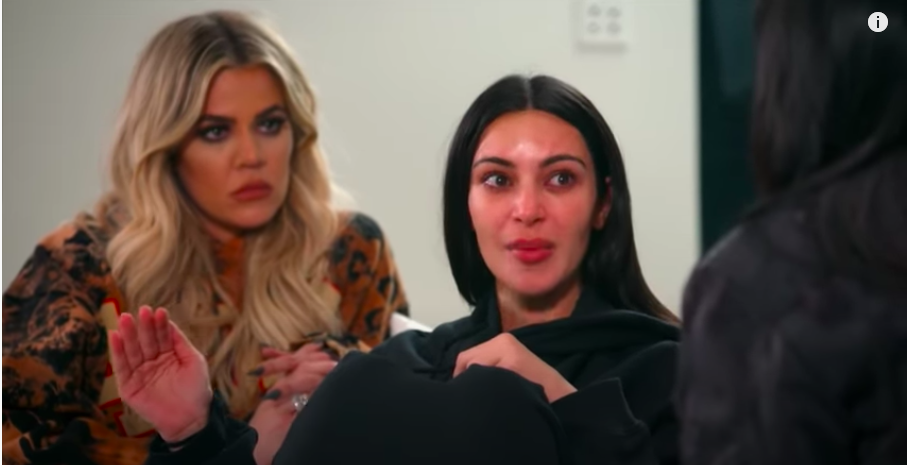
The episode dedicated to unpacking the incident finally aired six months later. It provided exclusive access to Kim’s harrowing testimony, which also contained details the public had never heard before — her tearful admission that she’d “mentally prepared” herself to be “shot in the head,” her voice breaking with emotion as she recalled begging the men: “I have babies at home. Please, let me live.” The episode also contained footage from the immediate aftermath of the incident, showing Kim fleeing France the moment the sun rose and collapsing in tears as she was reunited with her children.
But after so many months of interviews, police reports, and updates on social media, only 1.58 million viewers actually tuned in to watch KUWTK navigate the traumatic story. And by the end of 2016, ratings fell below 1 million per episode for the first time since the show began.
But the Kardashians were seemingly disinterested in reversing the decline. Less than a year later, the family was handed a dream storyline that could have reinvigorated the show. Instead, the handling of Kylie’s pregnancy pushed KUWTK further into disrepair.
Kylie’s pregnancy had the capacity to reestablish KUWTK as a ratings juggernaut, not least because interest in the youngest Kardashian/Jenner was exploding. Kylie’s dominance on social media had spawned an entire new wave of teen influencers. Her cosmetics company was booming. And she’d recently starred in her own E! show, Life of Kylie, an eight-episode series charting her charmed existence. Most importantly, though, Kylie appealed to a younger demographic, attracting an entirely new generation of KUWTK fans and securing the family’s future dominance.
But Kylie’s storyline also had the additional appeal of surprise. She was just 19 when she discovered she was pregnant, and had only been dating her new boyfriend, rapper Travis Scott, for a matter of weeks. Reports of her pregnancy sent the media into a tailspin, but rather than capitalizing on the public attention and confirming the news, Kylie disappeared from view.
She remained in hiding for the entire duration of her pregnancy, evading the paparazzi, leaving her social media accounts virtually dormant, and refusing to comment on the reports. Her disappearance was the complete inversion of the Kardashians’ usual strategy around pregnancies, which had traditionally been exploited for the huge ratings they always delivered. It seemed impossible that her silence — and the family’s elusive responses to the media’s questions about the pregnancy — was leading to anything other than a grand reveal on KUWTK.
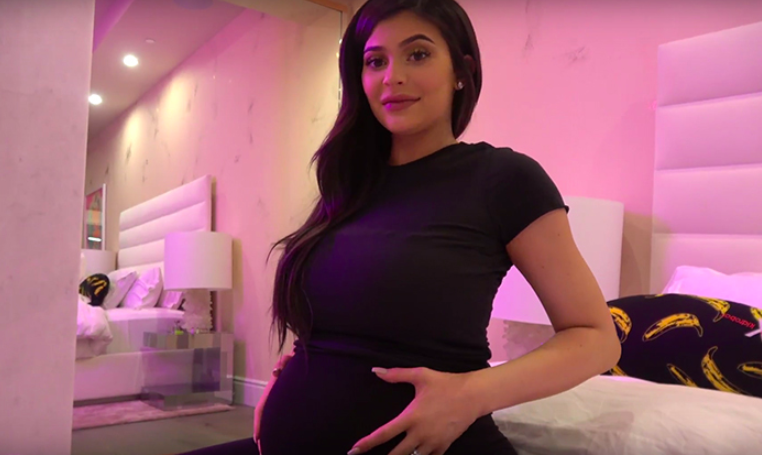
However, that reveal never came. Kylie announced the news that she’d welcomed a daughter two days after giving birth in a statement posted to Instagram, with the footage of herself during pregnancy and labor published directly to YouTube. After subverting expectations so effectively and giving birth privately, the public appetite for access to the news was immense — 25 million watched the video in the first 24 hours, with the Instagram photo confirming Stormi’s name becoming the most-liked post in the platform’s history.
But KUWTK had only one episode devoted to Kylie’s pregnancy in Season 15, which aired a full year after the first reports broke. And, perhaps in keeping with her invisibility during pregnancy, Kylie was barely present in the show. Her only appearances came in a confessional filmed three months after she’d given birth and in the episode’s final minute where she cradled a month-old Stormi, whose face was obscured by blankets. Far from being the hub of one of the biggest storylines the family had ever handled, KUWTK was left picking up the scraps. The season ended with the lowest ratings in the history of the show.
Far from being the hub of one of the biggest storylines the family had ever handled, KUWTK was left picking up the scraps.
But even with the waning ratings, KUWTK continued attracting media attention, fueling the Kardashian promotional machine and further entrenching them in the gossip industrial complex. Entertainment websites, including BuzzFeed, still reported on the standout moments from each episode, important clips were edited into viral videos attracting millions of views, and the family’s live tweets discussing the most dramatic scenes were reposted into timelines. It remained impossible for the public to avoid indirectly consuming KUWTK’s narrative. However, in allowing ratings to decline at such a rate, the family risked their show being canceled. And without a vehicle by which to chronicle their drama and package it neatly as a narrative that they could control for media consumption, the family were endangering their cultural prominence and influence.
After all, without a new season to promote, the family loses access to their standard media appearances. In the months leading up to and throughout the broadcast of a typical season, a constant rotation of family members appears on TV, radio, podcasts, magazine covers, and website homepages to discuss robberies, or hint at pregnancies, before conversations neatly segue into lip kits or shapewear. Without the hook of their real-life drama — and the chance to promote the source of it — the Kardashians lose their primary means of flooding every crevice of public consciousness with their narrative, stoking their most dramatic storylines while aggrandizing their brand. The KUWTK promotional machine provides the very foundation for their ubiquity. Without it, their grip on public attention loosens.
This made multiple family members’ decision to begin withdrawing from KUWTK in quick succession completely baffling. Rob dropped out in 2017. By then, Kendall and Kylie had both already taken a backseat. And, despite helming the mothership for almost a decade, Kris also took on less prominence following Caitlyn’s 2016 PR crusade against her.
The most disillusioned of all, though, was Kourtney, whose detachment from KUWTK began after her split from Scott Disick in 2015. The breakup prompted Kourtney to start working with a new therapist, who encouraged her to reevaluate how much of her life she exposed to the cameras, having spent so long offering up her most personal and darkest moments for the sake of ratings.
But in deciding to pull back from the show, Kourtney disrupted the core dynamics among herself, Kim, and Khloé, leading to a closer alignment between her two sisters than ever before. After years of Kourtney and Khloé ganging up on and lightheartedly teasing Kim, whom they often described as a “bore,” Khloé and Kim were now bonding over their shared frustration with Kourtney’s “bitchy attitude,” her failure to show up to filming, and her lack of work ethic. The shift in dynamics was not only disorientating for viewers, but led to simmering tension among the sisters.
And this tension reached a breaking point on that September 2017 afternoon in Khloé’s kitchen as the argument over the family’s Christmas card photo shoot broke out. After Kourtney demanded Kim shift all of her meetings to 7 a.m. to accommodate her schedule, and being roundly castigated by Kim for not understanding the mechanics of business in the process, she left the room.
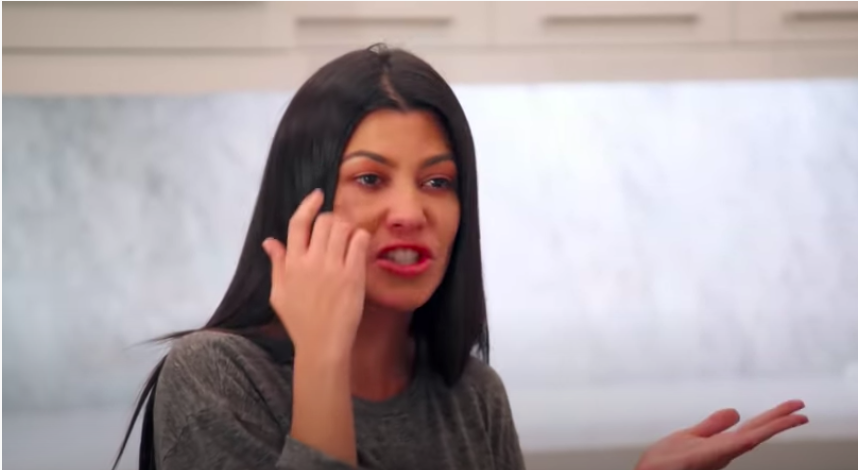
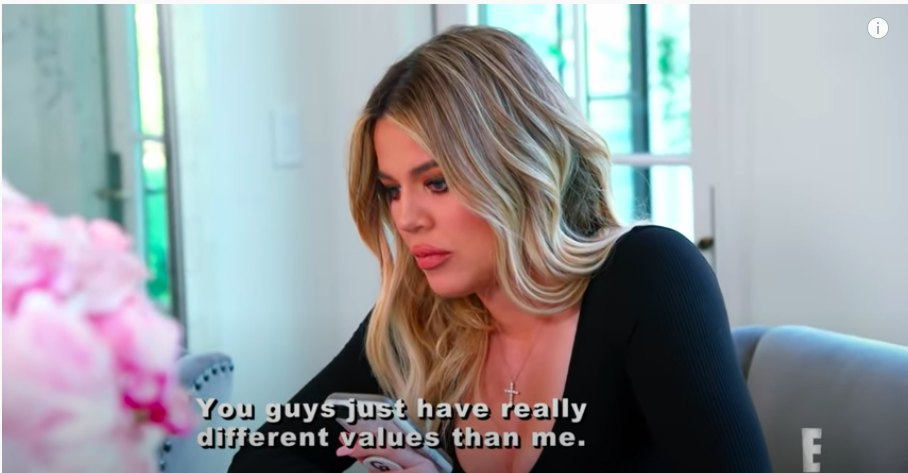
As Kris and Khloé sat reeling, Kim turned to them. Knowing Kourtney was in earshot, she said: “I need Kourtney to not be so fucking annoying with the fucking stick up her ass like she runs this shit, because she doesn’t. She’s the least exciting to look at.”
Kim finished her tirade to the sound of a door slamming. Kourtney had left the house in tears, and when Khloé called her sister to ask why she’d stormed out, her anger was palpable through speakerphone. “I’m not here to be fucking mistreated by my fucking bitch family,” she shouted. “Kim saying I’m the least interesting to look at?! Who even speaks like that?”
“We have a disgusting family,” she continued, as Khloé’s eyes widened in shock. “I’m ashamed to even be a part of people like that.”
“I cannot wait for the day when I don’t have to have these fake relationships anymore.”
Later that evening, Kourtney returned to Khloé’s kitchen to speak with Kim about the fight. “When you die and I die it’s not about the amount of money that’s in our bank accounts,” Kourtney sobbed. “I don’t give a fuck about that stuff … I can’t handle being around you when you’re just a bitch.”
“Well,” Kim said through a mouthful of noodles, “I’m sorry if I said something that was hurtful.”
“No!” Kourtney shot back, “You’re not sorry, Kim, you fucking said it. Every time I come anywhere where we’re filming, all I feel is judged. I will move to another state or another country, and I cannot wait for the day when I don’t have to have these fake relationships anymore.”

The shocking footage showed KUWTK coming apart at the seams. For the first time, the show broke the fourth wall and exposed the reality of the sisters’ relationship. Kourtney sobbing that she wished to be free from filming with a “cunt like Kim,” her implication that fame had morphed her family into “disgusting” humans with whom she had to fake relationships, and Kim’s contemptuous response to each comment proved how far they’d devolved from the easily resolved disputes that punctuated earlier seasons, and into disdain.
Each insult hurled by the sisters destroyed the illusion of their closeness and the bond on which their entire show — and, indeed, brand — was predicated. The episode was an undoing of Kris Jenner’s original pitch in which she emphasized the importance of family ties, and in one particularly plaintive moment, she could be seen attempting to quote Kourtney’s famous “There’s people that are dying” comment while her daughters screamed at each other. It was fitting, really — KUWTK’s creator desperately invoking one of the most famous lines from a show in its glory days as everything fell to pieces around her.
The episode gave rise to an entire dismantling of the fourth wall less than a year later, in an episode ironically titled “The Show Must Go On,” which proved the extent of disarray behind the scenes. During the episode, Kim and Khloé spoke to camera, asserting that Kourtney’s refusal to share her life was destroying the show. They accused Kris of abandoning the “mothership,” claiming her failure to prioritize the show was causing irreparable harm. “As our manager,” Khloé yelled down the phone to her mother, “you should want this show to be a success!”
Kris herself went on to admit that while KUWTK was the “foundation” of the family’s empire, she was feeling “ground down” by filming commitments. Eventually, the entire family met with the production crew for a conversation about the show’s future. The producers begged Kourtney to share more of her personal life, or at the very least “be present” when filming. She refused, stood up, removed her microphone and left the room. “I just don’t know how much longer we can go on like this,” Kim said in the final confessional.
Months later, Kourtney quit the show. The following season was slashed to just 12 episodes from a series peak of 21. And ahead of the most recent season premiere, it was announced that, after 13 years, the show would be moved from its primetime Sunday night slot to Thursdays. For dedicated fans of the show, the writing was on the wall.
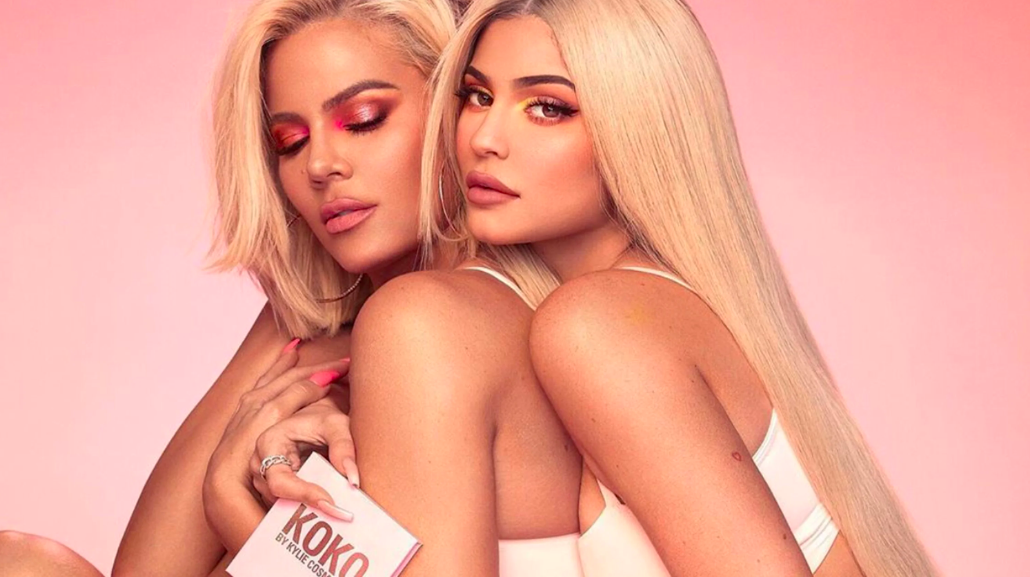
It could be argued that the Kardashians no longer need KUWTK. After all, they have already leveraged stratospheric fame and wealth into lucrative businesses. Kim’s and Kylie’s cosmetics companies are currently valued at $1 billion and $900 million, respectively; Khloé’s clothing brand had one of the most successful launches in history; even Kourtney — the least enthralled by life in the public eye — recently launched a lifestyle website.
But the success of these businesses hinges on the show and its ability to shape the women as knowable characters and public personas, which were created and perpetuated by the show. In Kim’s and Kylie’s cases this is literal — their brands are named after them, their faces splashed across the packaging. But Khloé also appears in Good American campaigns, their makeup collections often feature palettes with names related to iconic quotes from the show, and the sisters frequently “collab” to boost sales. Just this week, KKW Beauty announced a sister perfume collection, proving that the family still see themselves as powerful, as valuable, when they’re connected to each other. But KUWTK is what drove their most entertaining, moving, and compelling interactions as a family. Without the show providing fans glimpses of those dynamics and an attachment to the Kardashians as people with flaws and dramas and conflicts — with personalities — their products become indistinguishable from the hundreds of other celebrity makeup and clothing collections readily available.
It seems fitting, really, that the family chose to announce the end of KUWTK with coordinated Instagram statements. It was a tentative first step into a new reality in which the platform will act as their primary vessel for communication with fans.
Without the show’s sense of authenticity creating a bond with fans that can then be leveraged, the entire Kardashian model for success collapses.
But simply continuing as social media stars won’t be enough. Instagram stories and tweets are a poor substitute for the level of access fans have had to the family’s most intimate moments over the years. What’s more, fans know that social media is heavily curated, having stylized their own lives using the very same apps. The show at least provides the illusion of reality, with unintentionally candid moments — Khloé wiping Kim’s makeup from her wall after her physical fight with Kourtney, for example — still managing to slip through. Without the show’s sense of authenticity creating a bond with fans that can then be leveraged, the entire Kardashian model for success collapses. Nobody, including the family themselves, know the form their fame will take without the show as its driving force.
The Kardashian empire was founded the moment Kris Jenner flung open the doors of her Calabasas, California, home, inviting a camera crew to capture her family’s most intimate moments. It’s poignant, then, that she delivered her first interview about the show’s end to Ryan Seacrest — the man to whom she’d pitched KUWTK 13 years earlier. Her voice cracked with emotion as she spoke to him just hours after the news was announced, describing an emotionally drained family attempting to find their footing in a world without its solid foundation. She revealed the decision to end the show had been gut-wrenching, that there’d been countless tears, with Khloé especially devastated. “I haven’t processed it,” Kris said tearfully. “It’s really the end of an era." ●


